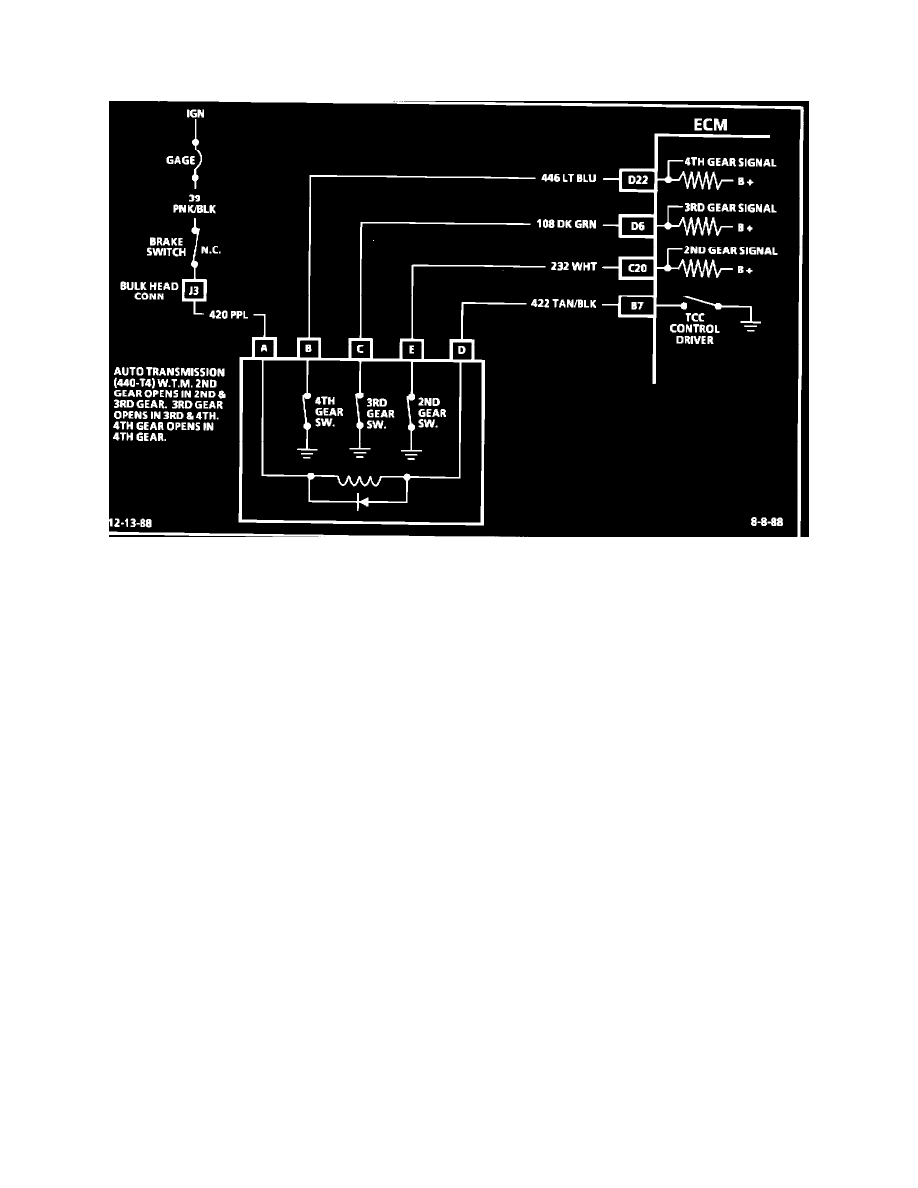Regal V6-173 2.8L (1988)

The "Scan" tool only indicates when the ECM has turned "ON" the TCC driver, and this does not confirm that the TCC has engaged. To determine if
TCC is functioning properly, engine rpm should decrease when the "Scan" indicates the TCC driver has turned "ON."
CHART C-8C
(Page 1 of 3)
440-T4 TORQUE CONVERTER CLUTCH (TCC) WITH TORQUE MANAGEMENT (ELECTRICAL DIAGNOSIS)
Circuit Description:
3.1 L (VIN T) "W" CARLINE (PORT) The purpose of the automatic transmission torque converter clutch
feature is to eliminate the power loss of the torque converter stage when the vehicle is in a cruise condition.
This allows the convenience of the automatic transmission and the fuel economy of a manual transmission. The
heart of the system is a solenoid located inside the automatic transmission which is controlled by the ECM.
When the solenoid coil is activated ("ON"), the torque converter clutch is applied which results in straight
through mechanical coupling from the engine to transmission. When the transmission solenoid is deactivated,
the torque converter clutch is released which allows the torque converter to operate in the conventional manner
(fluidic coupling between engine and transmission). The TCC will engage on a warm engine under given road
load in 2nd, 3rd and 4th gears. TCC will engage when:
^
Engine warmed up
^
Vehicle speed above a calibrated value (about 28 mph 45 km/h)
^
Throttle position sensor output not changing, indicating a steady road speed.
^
Brake switch closed
